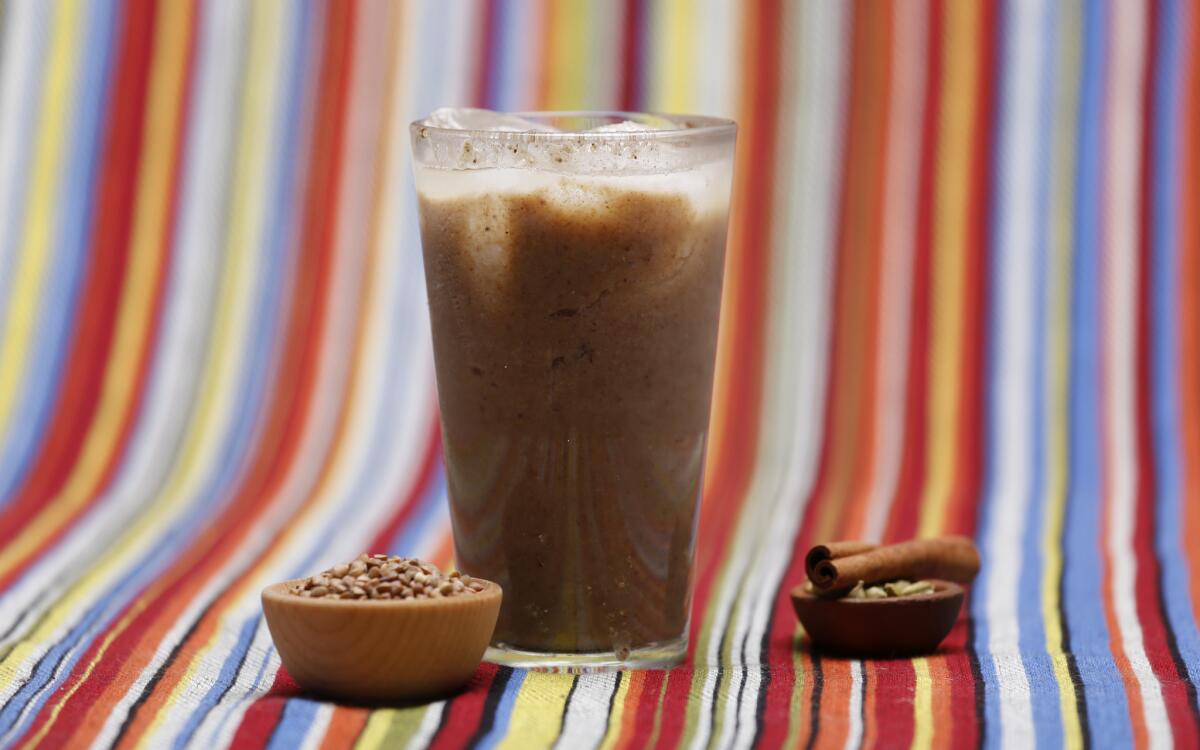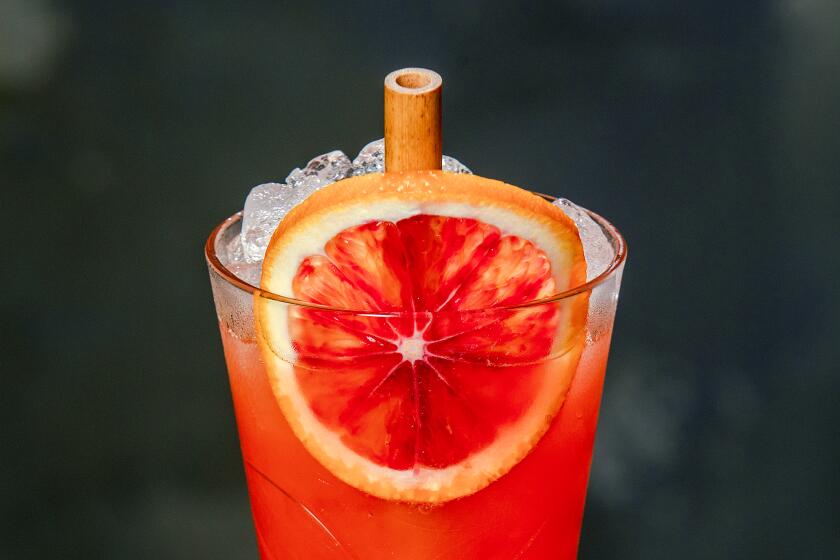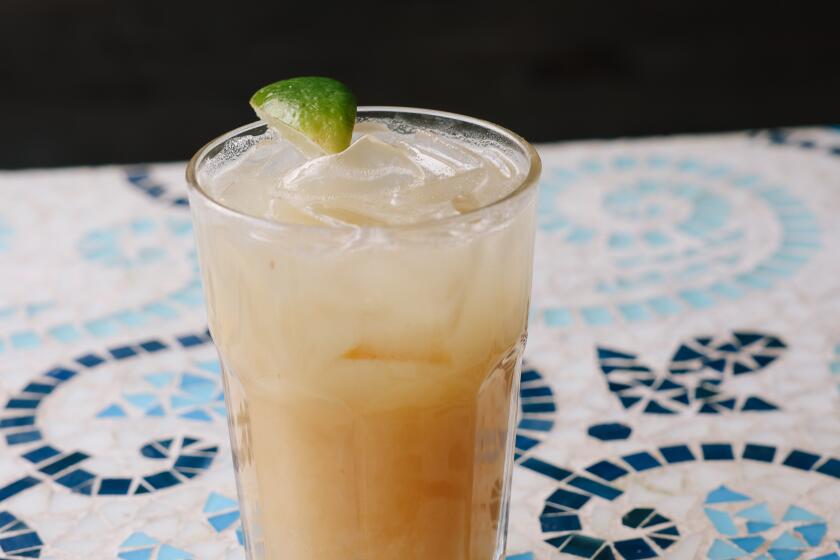Buckwheat cardamom horchata

Deepening your bench of refreshing beverages is always a good plan at this time of year. Horchata—opaque, sweet, pleasantly gritty, and creamy but made without milk—is wildy popular in Central and Southern Mexico, especially in Oaxaca and the Yucatan Peninsula. These mostly rice-based horchatas are an interpretation of a much older drink from Valencia, Spain, made out of a small tuber called a tigernut or chufa. Horchatas have an etymological and culinary cousin in orgeat, the almond-based syrup used in Mai Tais and other cocktails; the ancient ancestor, and eponym (based on the Latin hordeum for barley) of both drinks is barley water, the zeitgeisty au courant drink of 600 BC.
Horchata can be made from such a variety of ingredients--rice, almonds, tigernuts, barley, seeds—that it can be thought of as a technique, rather than a singular product. Horchatas and horchata-adjacent beverages are non-dairy milks dressed up in sweet and sometimes spice-y accessories, made by soaking, grinding, pulverizing, and finally straining a base ingredient (rice, tigernuts, almonds, even sesame seeds in Puerto Rico and melon seeds in Mexico).
On a molecular level, the horchata-making process is all about extraction and suspension. Nuts, seeds, grains, and tubers--the key components of a horchata--contain varying amounts of starch, fat, and protein, the basic dietary macronutrients and, also, basic drivers of food texture. Proteins are what make egg whites goopy and form the structure in meringue and bread dough; fats make mayonnaise thick and creamy; and starch is what makes mochi chewy and sticky. The combination of grinding, soaking, and blending your nuts, seeds, et al. with water lets this good stuff migrate into the water and create an opaque, slightly thickened, milky-creamy mixture known as a suspension—tiny, tiny little pieces or globules of starch, protein, and fat floating around in water. They’re way too small to see with the naked eye, but they are big enough to scatter usually well-ordered light beams, which is what causes them to appear white and opaque instead of clear.
Suspensions with especially tiny particles are called colloids or colloidal suspensions, and will remain in this floating state indefinitely. Larger particles in suspension will eventually settle out, like muddy water left to stand. Proteins and the fats in nuts tend to make pretty stable colloidal suspensions, aided by protein’s ability to interact positively with water. Pure nut oil mixed with water would separate out pretty quickly into distinct layers because oil and water don’t like to mix. The intact fats in nuts, however, are found in little liquid nuggets called oil bodies, which are sheathed in a layer of proteins and other molecules that attract water. The horchata-making process leaves these oil bodies mostly intact in their sheaths, which allows them to float in a happy colloidal suspension in water rather than congregate into a separate layer.
In grain- and tuber-based horchatas, starches are the main player. Starches are carbohydrates, made up of long linked chains of small sugar molecules (specifically, glucose). Glucose and other small sugars are, on their own, very soluble in water. Strung together into starch molecules, they still have a mutual attraction with water molecules, but are too big to dissolve. This indissolvablity is amplified by the way starch-producing plants store their starches, laminated together in huge numbers into compact granules.
Grinding or blending rice or tigernuts helps extract as many starch granules into the horchata-water as possible, and these granules will float for a time but eventually will settle out. A little bit of free starch gets washed into the water as a stable colloidal suspension (this is the same starch that you wash away when you rinse rice), but most of it stays in the granules. This is why a rice-based horchata is a bit more textured and less creamy than a nut-based horchata, because you can feel the starch granules with your tongue and because there are fewer proteins and oil bodies to make a creamy emulsion.
A word of warning: many starch-based horchata recipes will have you heat the rice to speed the extraction process (heat is, after all, just zippier, jigglier molecules sped up by energy). But overheat those glued-together, impenetrable starch granules and you end up with horchata-flavored glue. Starch, water, and heat form a menage a trois that leads to a process called gelatinization, where the heat helps the water wiggle into and unspool the starch granules, and the small sugars chained together to make individual starch molecules start binding with water. When this happens to millions of sugars chained together, everything gets sticky, exponentially quickly. This is exactly what happens during starch gelatinization: the linked-up sugar molecules tie up all the water, and quickly turn a liquid with granules floating in it into a dense paste. To avoid this, steer clear of the gelatinzation temperature of your grains: which is usually between 140-180℉ (Basmati rice is 176℉, Calrose rice is 145℉).
In a non-reactive pot or container, combine the buckwheat, water, cardamom, cloves and cinnamon stick. Cover and steep the mixture for 2 hours on the countertop, or refrigerate overnight.
Pour the mixture into a blender (this may need to be done in batches, and add additional water if needed to thin if the buckwheat has absorbed all of it) along with the honey and salt and blend at high speed until the buckwheat is completely broken down, 4 to 5 minutes. The mixture will look like brown sand with cloudy white water floating above it.
Strain the mixture using a fine mesh strainer, pushing out all of the liquid and discarding the solids. Add additional water to thin if desired. This makes about 2 quarts horchata, depending on your desired thickness. The horchata will keep, covered and refrigerated, up to 3 days. Serve over ice.
Get our Cooking newsletter.
Your roundup of inspiring recipes and kitchen tricks.
You may occasionally receive promotional content from the Los Angeles Times.















